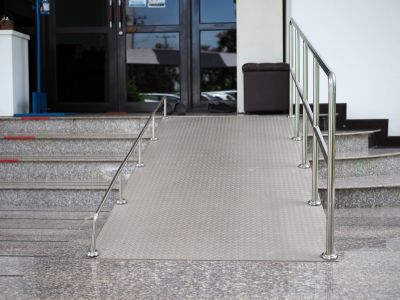Reliable Ramp Improvements for Safe Entryways
Disabled ramp renovations improve accessibility and compliance for buildings, ensuring safe and convenient access for individuals with mobility challenges. These renovations can involve modifications to existing structures or the installation of new ramps, tailored to meet specific accessibility standards.

Contemporary ramp designs focus on safety, durability, and aesthetic appeal, integrating seamlessly with building architecture.

Upgrading existing ramps enhances safety features such as handrails, non-slip surfaces, and proper slope angles.

New ramp installations are planned to meet current accessibility codes, ensuring long-term usability and compliance.
Implementing disabled ramp renovations involves detailed planning and precise execution to meet regulatory standards and accommodate various user needs. Properly designed ramps facilitate independent movement, reduce accidents, and promote inclusivity within public and private spaces.
The process of renovating or installing a disabled ramp typically includes site assessment, design planning, obtaining necessary permits, construction, and final inspection. The duration of the project varies based on the scope but generally ranges from a few days to several weeks.
Duration and Process of Disabled Ramp Renovations
Professional renovation of disabled ramps usually takes between one to three weeks, depending on complexity. The process begins with a site evaluation to determine the best approach, followed by design and material selection. Construction is carried out with minimal disruption, and final inspections ensure compliance with accessibility standards.
Hiring a professional ensures that the renovation adheres to local building codes, safety standards, and accessibility guidelines. Experienced contractors can efficiently manage the project, reduce errors, and deliver a high-quality, compliant ramp that meets all requirements.
Benefits of Professional Disabled Ramp Renovations
Investing in expert renovation services also minimizes delays and costly mistakes, ensuring the project is completed on time and within budget. The result is a reliable, compliant ramp that benefits all users.
